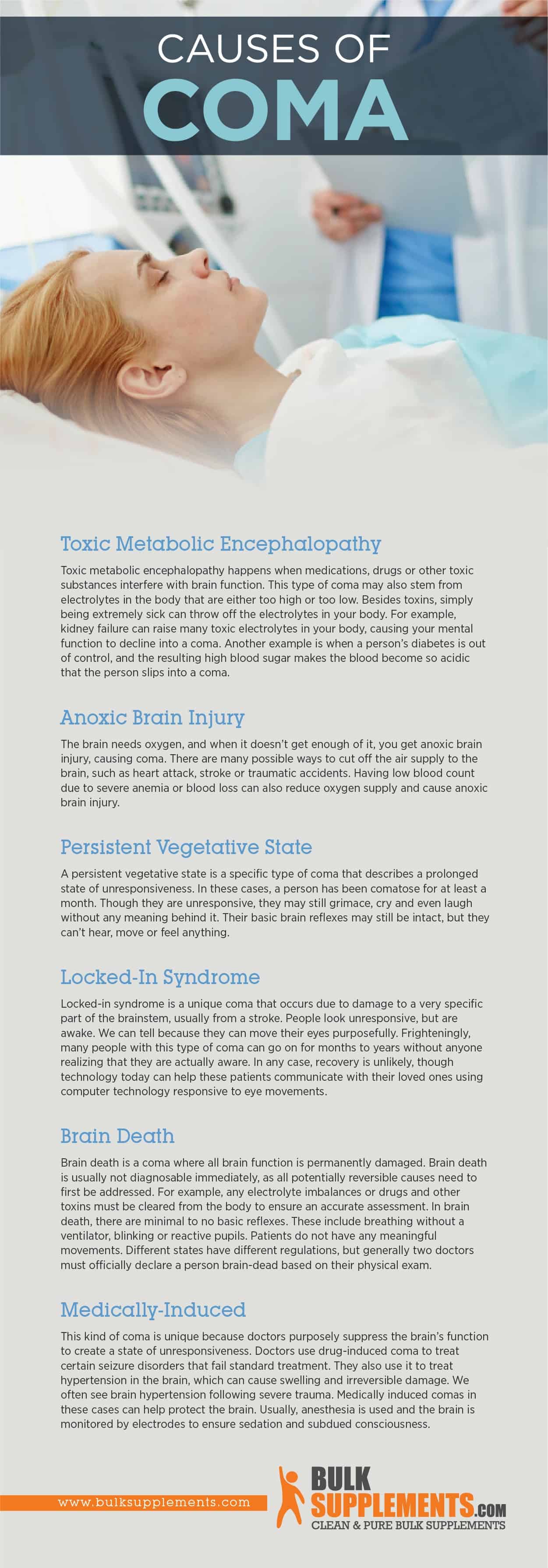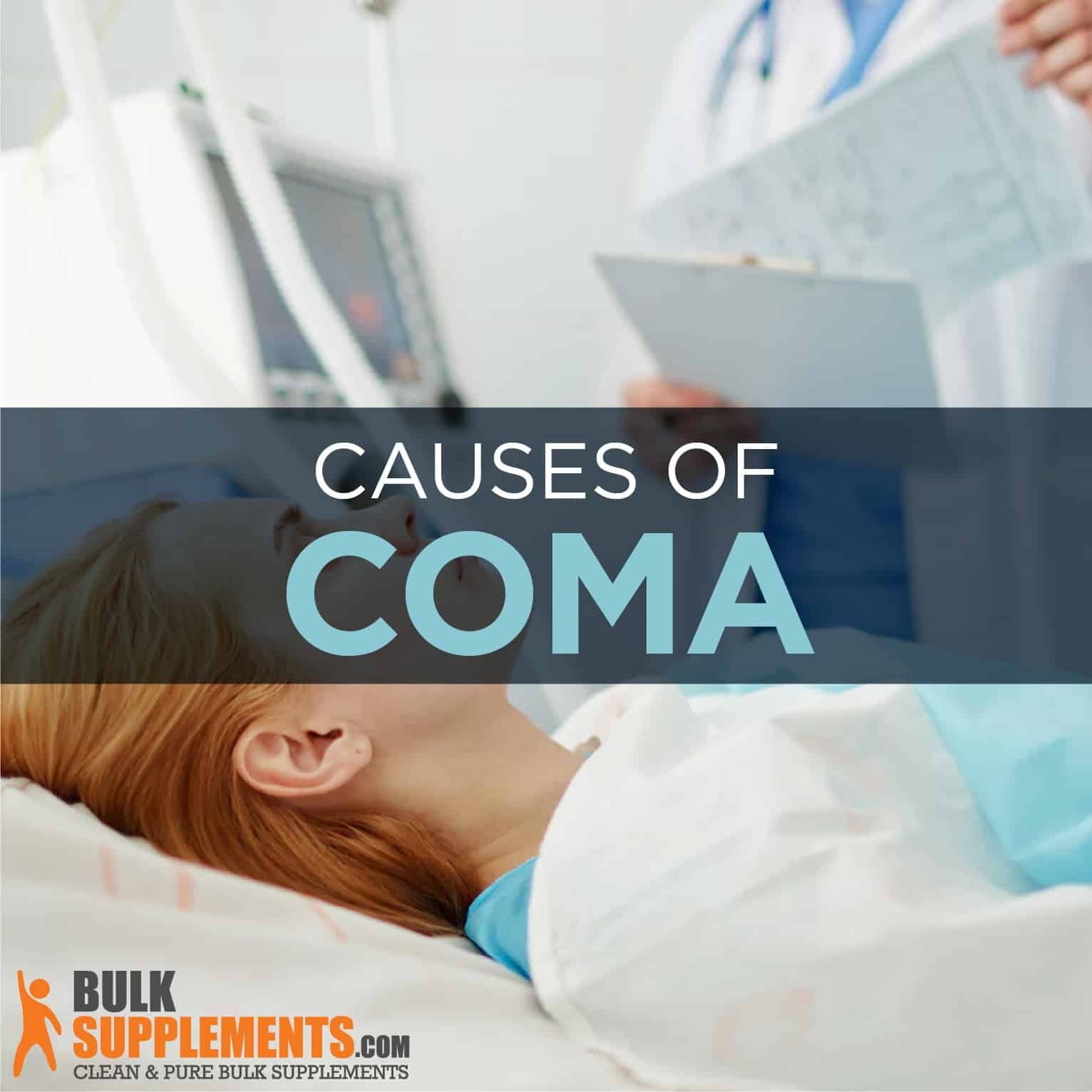What is a Coma?
Modern medicine can do amazing things. Today, we have machines and pills to revive a dying heart. Doctors often bring people back to life after suffering one, two or maybe even three heart attacks. But when it comes to the brain, we are at a standstill. The brain is the most important organ in our body. It’s the control center, and it’s the source for all our conscious thoughts. When the brain has suffered a severe injury, people can experience a coma. A coma is a state in which a person has no meaningful response or interaction with their environment. The person is very much alive, and their brain cells may also be alive. However, something is preventing the brain from working properly (x).
Coma Characteristics
In a coma, a person has no meaningful interaction with their environment. This means that you can’t wake them up by pinching them or calling their name, as they are unaware of it (x).
Most people in a coma don’t move at all. However, some may have twitches here or there. These are just reflexive jerks, never purposeful movements. In many cases, coma patients will have reduced brain reflexes. Sometimes, even the most basic reflexes (x). These basic reflexes are collectively known as brainstem reflexes. When someone is lacking brainstem reflexes, their pupils may not dilate or constrict properly, they will not gag or cough when they choke and, in severe cases, they may not breathe on their own.
There are many possible reasons why someone may be in a coma. Anything that suppresses brain activity can cause it. This ranges from lack of oxygen, acute infections, drugs and toxins, electrolytes that are too high or low in the blood and trauma. Tumors, strokes and bleeding in the brain can also cause a coma (x).
What Causes a Coma?
Though they may all look the same on the outside, it’s what’s happening on the inside that counts. The type of coma depends on the cause.
Toxic Metabolic Encephalopathy
Toxic metabolic encephalopathy happens when medications, drugs or other toxic substances interfere with brain function. This type of coma may also stem from electrolytes in the body that are either too high or too low. Besides toxins, simply being extremely sick can throw off the electrolytes in your body. For example, kidney failure can raise many toxic electrolytes in your body, causing your mental function to decline into a coma. Another example is when a person’s diabetes is out of control, and the resulting high blood sugar makes the blood become so acidic that the person slips into a coma (x, x).
Anoxic Brain Injury
The brain needs oxygen, and when it doesn’t get enough of it, you get anoxic brain injury, causing coma. There are many possible ways to cut off the air supply to the brain, such as heart attack, stroke or traumatic accidents. Having low blood count due to severe anemia or blood loss can also reduce oxygen supply and cause anoxic brain injury.
Persistent Vegetative State
A persistent vegetative state is a specific type of coma that describes a prolonged state of unresponsiveness. In these cases, a person has been comatose for at least a month. Though they are unresponsive, they may still grimace, cry and even laugh without any meaning behind it. Their basic brain reflexes may still be intact, but they can’t hear, move or feel anything.
Locked-In Syndrome
Locked-in syndrome is a unique coma that occurs due to damage to a very specific part of the brainstem, usually from a stroke (x). People look unresponsive, but are awake. We can tell because they can move their eyes purposefully. Frighteningly, many people with this type of coma can go on for months to years without anyone realizing that they are actually aware. In any case, recovery is unlikely, though technology today can help these patients communicate with their loved ones using computer technology responsive to eye movements.
Brain Death
Brain death is a coma where all brain function is permanently damaged. Brain death is usually not diagnosable immediately, as all potentially reversible causes need to first be addressed. For example, any electrolyte imbalances or drugs and other toxins must be cleared from the body to ensure an accurate assessment. In brain death, there are minimal to no basic reflexes. These include breathing without a ventilator, blinking or reactive pupils. Patients do not have any meaningful movements. Different states have different regulations, but generally two doctors must officially declare a person brain-dead based on their physical exam (x).
Medically-Induced
This kind of coma is unique because doctors purposely suppress the brain’s function to create a state of unresponsiveness. Doctors use drug-induced coma to treat certain seizure disorders that fail standard treatment. They also use it to treat hypertension in the brain, which can cause swelling and irreversible damage. We often see brain hypertension following severe trauma. Medically induced comas in these cases can help protect the brain. Usually, anesthesia is used and the brain is monitored by electrodes to ensure sedation and subdued consciousness (x).

Coma Diagnosis
Diagnosing coma can be quite complicated. Doctors use both physical exam findings and lab and imaging tests to determine if someone is in a coma.
On examination, doctors will check for any reflexes or movements. For example, they may pinch the patient’s fingers and toes to see if they withdraw their arm or leg in response to pain. They will shine a light into the patient’s eyes to see if the pupils react properly by constricting. They may maneuver the head to see if the eyes are able to stay straight, and they will check breathing response when off a ventilator. Doctors will also check for gag reflex, which is one of the most primitive reflexes from the brainstem. This is usually done by inserting a suction tube down the throat of the patient. Other tests including squirting ice water into the ears to assess appropriate eye reactions, and using saline to check for blinking in response to touching the eye surface.
Lab tests and brain scans are also helpful for diagnosing coma. Doctors will test the blood looking for any explanation for the coma. They will test for infections, measure electrolytes, assess the health of the organs and test for drugs and other toxins as well. If meningitis or encephalitis is of concern, they will need to check the fluid from the spine. This requires inserting a large needle into the spinal cord to withdraw fluid from the central nervous system, called cerebrospinal fluid. This fluid is what bathes not only our spinal cord but also the brain itself. Brain imaging is most often a CT and MRI, which can help show any tumors, strokes or bleed that could be causing coma. MRI is also helpful to detail any damage from lack of oxygen or blood to the brain (x, x).
Treatment of Coma
Ultimately, treatment stems from the cause. Those with masses or bleeding in the brain may need surgery. Others with toxins may need dialysis, a special procedure that cleanses the blood much like a kidney does. Patients with low sugars may need replacement, and those with infections will need antimicrobial treatment.
If the cause is a reversible one, many people can recover if they have suffered no permanent damage. Others who have suffered permanent damage will live in a permanent vegetative state. Some may even die. People in a coma are completely disabled, and some who recover their consciousness may remain disabled for life. It can be very hard for doctors to accurately predict who wakes up from a coma. The outcome of recovery for any coma patient really depends on how much permanent damage has happened to the brain. The person’s age and general health also matters. The older and sicker you are, the more likely you are to not wake up from a coma.
The Bottom Line
A coma is a state of unresponsiveness where someone cannot hear sounds, feel pain, move their body or speak. There are varying degrees of severity and multiple different causes for coma. In general, all coma patients are unconscious and unaware, with the exception of locked-in syndrome. Diagnosis of coma depends on both physical exams and lab and imaging results, as well as careful review of one’s medical history. Information about the events leading up to the coma are also very important. The treatment of coma is focused on reversing causes of the coma itself, and supporting the person’s basic necessities of living. Complications from coma include bedsores, infections and permanent disability. Some people may even die from their coma.


